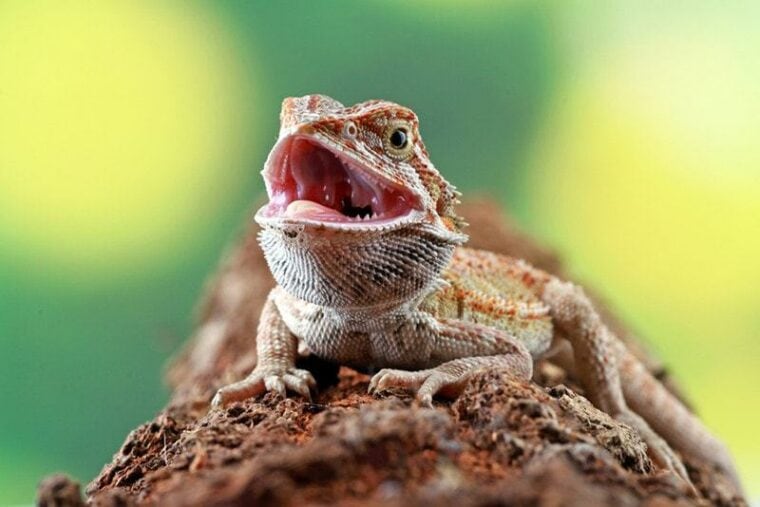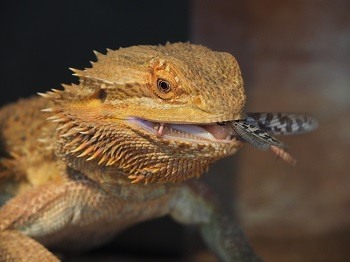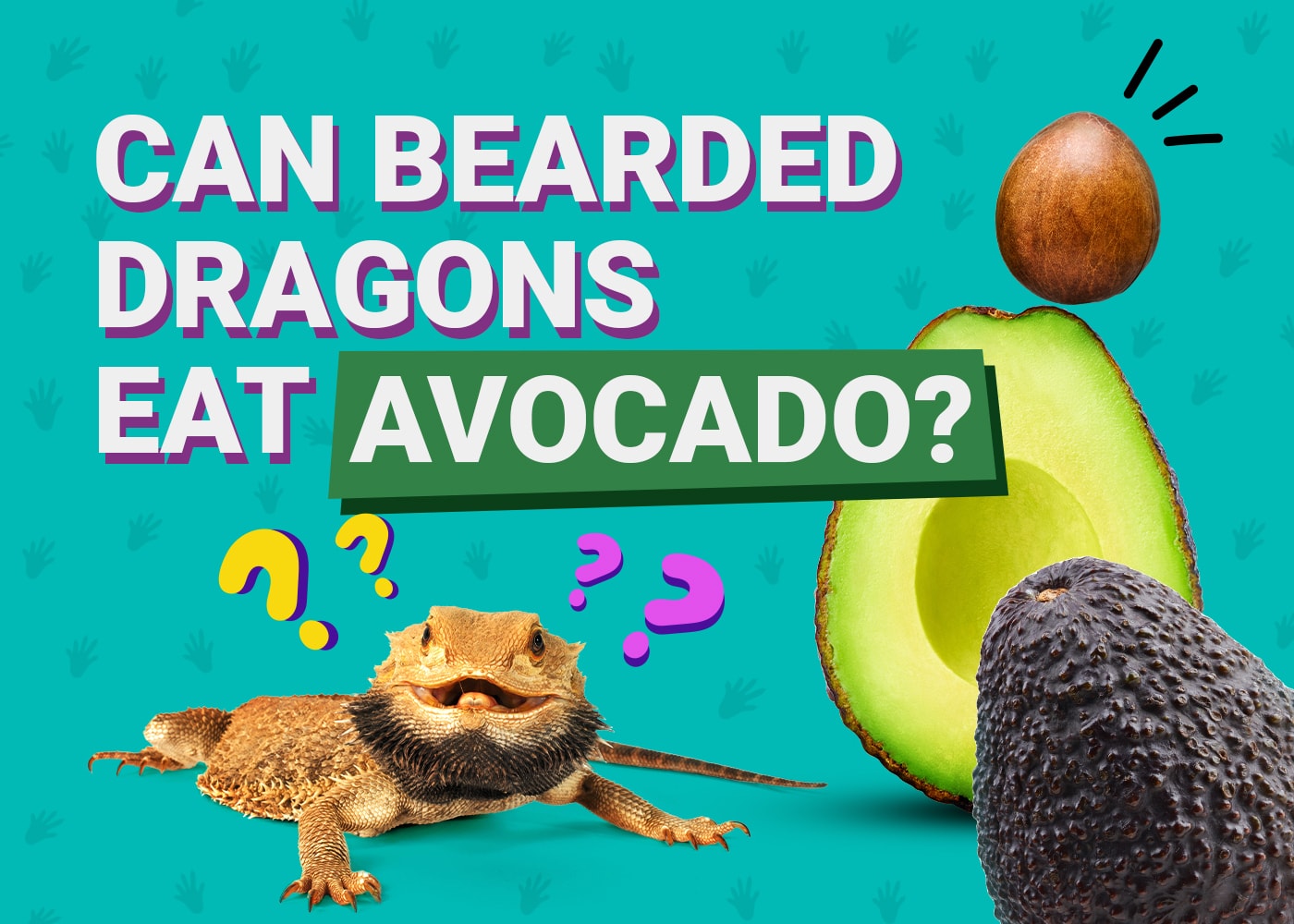
Watching your Bearded Dragons chow down on their veggies and insects, you may wonder how they manage such a varied diet. At first glance, it might seem like Bearded Dragons don’t even have teeth to munch their food. Yet taking a closer look, you’ll discover that not only do Bearded Dragons have teeth, but they also boast over two times more than humans!
With that many teeth, dental care becomes paramount in assuring a decent quality of life for your pet. We’ll explore whether Bearded Dragons have teeth and what you can do to keep them in perfect health.
Click to skip ahead:
- Bearded Dragons Teeth
- Do Teeth Fall Out
- Tips for Healthy Teeth
- Periodontal Disease Facts
- How to Clean Bearded Dragon Teeth
- Bearded Dragon Bites
Do Bearded Dragons Have Teeth?
Bearded dragons are born with teeth, ready to fend for themselves, and start eating proteins and vegetables from day one. Adults have a complete set consisting of up to 80 teeth. The upper row may have 11–17 teeth per side, while the lower has up to 20 per side.

Acrodont Teethbear
Bearded dragons have a combination of acrodont and pleurodont dentition lining their jaws. Acrodont teeth do not enter a socket, instead fusing superficially to the jaw’s surface, creating a relatively delicate connection. The triangle-shaped teeth, taking up most of the Bearded Dragon’s mouth, are tiny and often difficult to see.
As Bearded Dragons mature, their acrodont teeth wear down from use. These teeth are monophyodont, meaning they do not regenerate. When they’re gone, they’re gone.
Pleurodont Teeth
By contrast, pleurodont teeth at the front of the mouth are semi-set in the jaw. Unlike the non-regenerative acrodont teeth, the pleurodont teeth can grow back repeatedly if lost. The Bearded Dragon’s four anterior teeth (two on top, two on bottom) are pleurodont. When the lizards are born, they have a large egg tooth at the front of their snout, helping them chip through their egg to emerge into the world. They’ll lose this tooth shortly after leaving the egg.
The monophyodont and polyphyodont combination of teeth is a unique characteristic of the Bearded Dragon. The distinct genetic traits combine mechanisms found in geckos and sharks to regrow the lizard’s teeth on a one-for-one basis.
Do Bearded Dragon Teeth Fall Out?
While the pleurodont teeth in the front of the Bearded Dragon’s mouth will regrow should they fall out, the acrodont teeth lining the jaw’s posterior will not regrow. The acrodont teeth can break off easily and are at risk of periodontal disease with a poor diet, environment, and grooming habits.

What Do Healthy Teeth Look Like?
Checking your Bearded Dragon’s teeth and gums frequently will ensure you catch any dental disease early to prevent permanent damage. You can open the mouth by slowly pressing down on the lower jaw with your index finger. Another trick some people use is to cover the eyes without applying pressure.
Bearded Dragon teeth are an opaque white color. The mucous membranes around the mouth should be pale, light yellow, or soft pink. Brown staining and dark spots are early signs of periodontal disease, a bacterial buildup resulting in inflammation and infection around the gums and teeth.
Periodontal Disease
Though rare in the wild, periodontal disease is surprisingly prevalent among pet Bearded Dragons. Husbandry practices often present the lizards with environments that don’t adequately replace their natural habitat and foods that promote poor dental health.
When allowed to worsen, the infection can incur severe conditions such as sepsis or osteomyelitis, an infection in the bone. Any signs of disease, painful chewing, or behavior changes should inspire an immediate conversation with your vet.
What Causes Periodontal Disease in Bearded Dragons?
The most common causes of periodontal disease include a poor diet, inappropriate environment, and old age. Up to 86% of Bearded Dragons over 8 years old have periodontal disease, while only 11.5% under the age of one show signs of the condition. Frequent oral exams and regular checks become more critical as your lizard ages.
Food plays a central role in healthy teeth. Soft foods, including mealworms and waxworms, can be damaging, as they can become trapped in the teeth and gums, allowing for infectious buildups. Sugary foods are also harmful. You should avoid fruit, which is one of the primary contributors to gingivitis and periodontitis. Rougher, hard foods, such as beetles and crunchy veggies, clean the Bearded Dragon’s teeth without causing damage.
You also can’t discount the value of a proper habitat. Metabolic bone disease can occur from a calcium and Vitamin D3 deficiency. The condition can cause severe problems, including twitching and tremors, bone deformities, and a softened jaw.
An imbalanced diet is a key contributor to MBD. But UVB lighting and environmental controls can also affect your lizard’s ability to control calcium usage, highlighting the importance of maintaining adequate temperature, humidity, and lighting.

How to Clean Your Bearded Dragon’s Teeth
Cleaning your Bearded Dragon’s teeth is a crucial part of the care routine. They need cleaning one to two times weekly. Your vet can show you the best cleaning method for your lizard, which may include a dilute chlorhexidine solution to kill any fungus, yeast, and bacteria that may contribute to gum and tooth disease. Otherwise, you can safely clean their teeth with a wet cotton swab.
An annual cleaning at the vet is necessary to remove built-up tartar and teeth stains. The vet anesthetizes the lizard before cleaning the teeth. If your Bearded Dragon develops an infection, it’ll typically receive antibiotics and additional treatments after cleaning.
Do Bearded Dragon Bites Hurt?
If your Bearded Dragon bites you, there’s little concern for your comfort or health. They may draw minor amounts of blood at most, but the bite’s faint traces of venom won’t be enough to cause severe reactions.
Bearded Dragon bites are rare. The normally sedate creatures typically only bite if they feel threatened. New Bearded Dragons that haven’t acclimated to the home or their people may bite if you try to handle them prematurely. Likewise, mishandling can ignite a biting reflex. From a general standpoint, environmental factors that cause stress will boost the chances of a nipping reaction from your dragon.
Final Thoughts
Bearded Dragons suffer from the common misconception that they’re easy to handle. Owners often underestimate their needs, missing critical details that lead to tooth loss, bone abnormalities, and infections. It isn’t enough to know your Bearded Dragon has teeth. Frequent checks, proper upkeep, and conversations with your vet about dental issues and maintenance plans will profoundly affect your Bearded Dragon’s overall health and quality of life.
- Related read: Can Bearded Dragons Eat Mango? Facts & FAQ
Featured Image Credit: Opayaza12, Shutterstock








